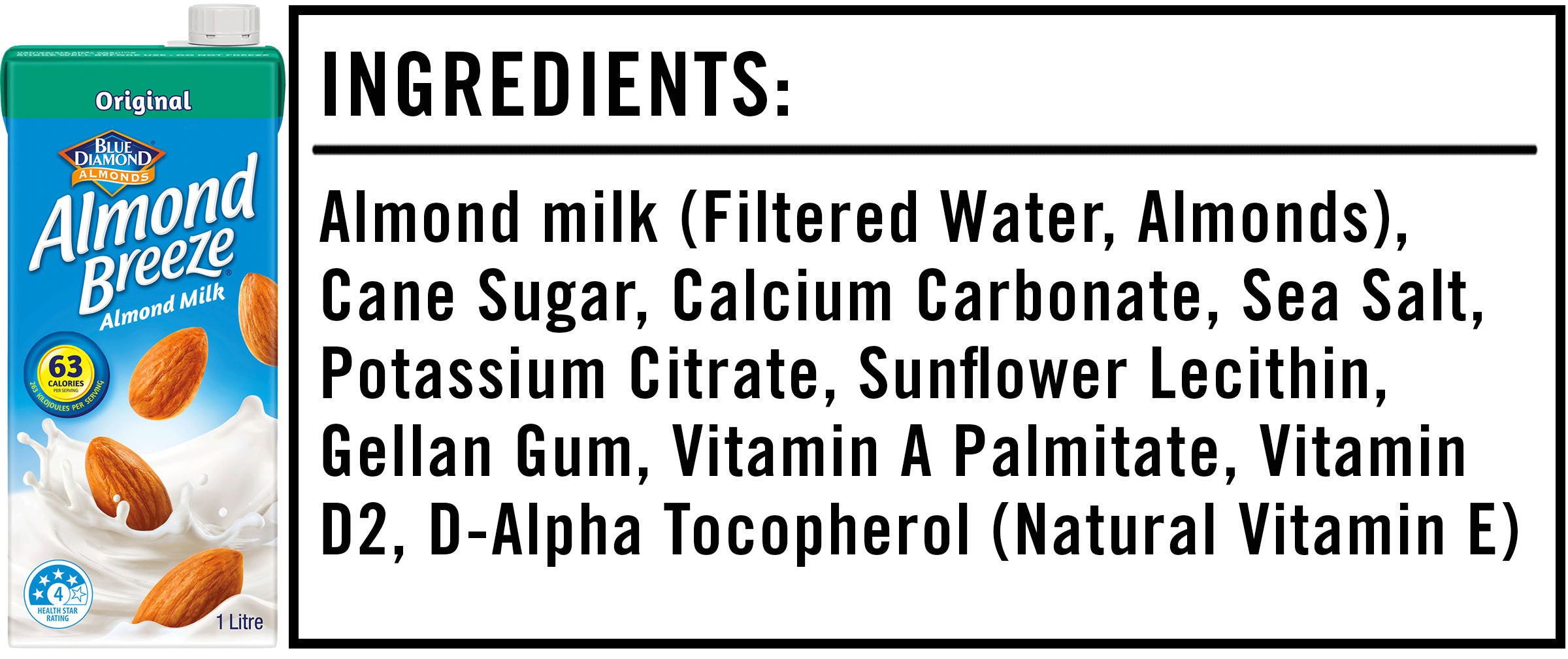We’re often told that you should never eat anything (or put anything on your body) if you don’t recognize everything on the ingredients list. But since most of us have no idea what xanthan gum or potassium benzoate are — or more importantly, what they’re doing to our bodies — we’re decoding the ingredients in the many things Americans put in (and on, or near) themselves.
This edition: Almond Breeze Original Almondmilk, which is made from 10 separate ingredients that we’ve broken down in the exact order they appear online.

The Ingredients
1) Almond milk (Filtered Water, Almonds): While extracting milk from almonds might sound complicated, the process is actually incredibly simple: Grind almonds in a blender with water, then strain out the pulp.
Now, you might expect almond milk to be brimming with almonds, but in 2015, a false advertising lawsuit was filed against Almond Breeze maker Blue Diamond, claiming that their products contain only two percent almonds.
This might sound outrageous, but the truth is, large amounts of water can be found in most popular beverages. In a statement to Time regarding the lawsuit, Blue Diamond explained, “The primary ingredient in nearly all popular beverages including coffee, tea, soda, juice and sports drinks is water. Cow’s milk is 85 percent to 95 percent water and the same can be said for most soy and almond milks which is why our brand is not alone in responding to recent claims.”
Knowing this, soon after the lawsuit was filed, a federal judge refused to command Blue Diamond to remove references to almonds on their label, and the suit was essentially tossed in the trash.
Lawsuits aside, just know that the amount of almonds in almond milk is almost negligible, and so are the benefits you might normally receive from them.
2) Cane Sugar: One cup of this almond milk contains seven grams of sugar, which is only half of what can be found in your average two percent cow’s milk (yeah, milk contains a shitload of sugar). Still, seven grams can add up, depending on how much almond milk you drink and what cereals you pair it with. The American Heart Association recommends that men consume no more than 36(ish) grams and women consume no more than 25 grams of added sugar per day. In which case, the unsweetened version of this almond milk is a better choice.
3) Calcium Carbonate: This is a basic calcium supplement, and since normal cow’s milk has (entirely wrongly) come to be known as one of the best sources of calcium, you can see why Almond Breeze might be inclined to add some to their almond milk. Calcium, as the dairy industry might have mentioned once or twice, helps promote healthy bones.
4) Sea Salt: This enhances the flavor, and the amount of sodium per serving — only 150 milligrams — is really nothing to worry about.
5) Potassium Citrate: This is a potassium supplement, and increasing your potassium intake can help lower your blood pressure and protect against muscle cramping, according to Harvard Medical School. In some cases, potassium citrate can also help stabilize foods and regulate their acidity levels.
6) Sunflower Lecithin: Derived from sunflowers, this helps the numerous ingredients found in this almond milk mix together.
7) Gellan Gum: This is a vegan-friendly thickening agent.
8) Vitamin A Palmitate: Another supplement, this compound acts as a source of vitamin A, which supports vision and the immune system.
9) Vitamin D2: This helps the body absorb calcium, which is handy considering the calcium carbonate added to this almond milk.
10) D-Alpha-Tocopherol (Natural Vitamin E): Yet another supplement, this acts as an antioxidant, helping to protect cells from damage caused by free radicals.
The Takeaway
Compared to cow’s milk, Almond Breeze almond milk is much lower in calories and contains no unhealthy saturated fats. Considering the added vitamins and minerals, this stuff also has a somewhat similar nutritional content. On the downside, this product boasts significantly less protein. Overall, though, if you like nut milk, this product is an okay choice.
That said, if you have some extra time and motivation on your hands, making your own almond milk at home is a much cheaper option. Since you can add more almonds and less sugar than Almond Breeze does, homemade almond milk also has the potential to be healthier and tastier than this product. Again, making almond milk is super simple — grind some almonds with water in a blender — but you can check out this handy video for some tips on making it taste even better.

